Products You May Like
Do you make a daily effort to roll your IT bands, but feel frustrated by continued tension and pain? You’re not the only one; the foam roller alone isn’t enough to fix this problem. You need specific stretches too, like the ones below. Done all together, they make a great 6-minute pre-workout routine for your lower-body and cardio days.
First off, let’s talk IT bands. IT band stands for iliotibial band. It is not a muscle, but rather a fascia that runs down the outside of your thighs to connect your pelvis to your knee.
Here’s what it looks like in context:
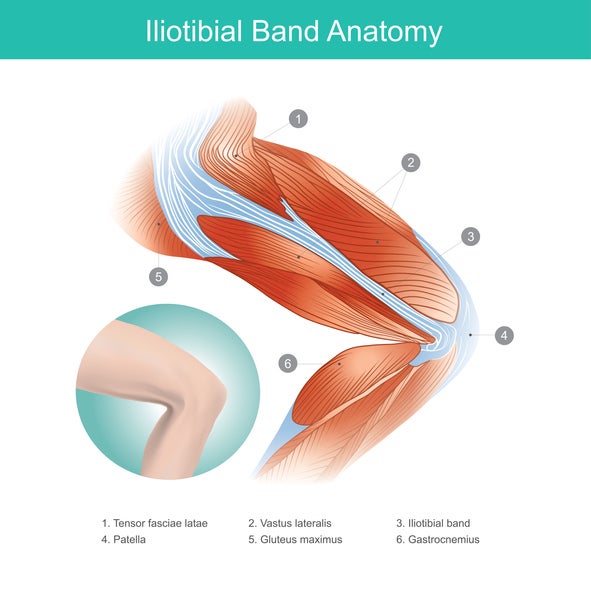
Fascia is essentially like super strong wrapping paper for your muscles—it holds them in place, and it is tough. Foam rolling or percussion massage can help loosen muscles and therefore fascia, but trying to stretch it out or lengthen fascia with a roller is like trying to stretch a piece of paper; there is no give. The IT band’s tension is governed by the muscles that attach to it, so when the muscles are in balance both in length and strength, IT band tension is relieved.
Stretches for Short, Tight Muscles
The most common tight and short muscle culprits that need daily stretching or trigger-point release are the piriformis (deep buttocks muscle), TFL (tensor fasciae latae, the muscle on the front and side of your pelvis), and outer hamstrings.
You can perform the following techniques by yourself. Do each of the following three stretches for 30-60 seconds daily as part of your warm-up. Note: Stretching should not be painful or max effort. Instead, perform stretches at an intensity that you would rate a five to seven out of 10.
1. Piriformis Figure-4 Stretch

- Lie on your back
- Cross your left ankle over your right thigh into a figure-4 position
- Bring the figure 4 up toward your chest and grab your right thigh with your hands or a stretch strap
- Hold the position for 30-60 seconds, remembering to breathe as you hold it
- Repeat on the other side
2. TFL Trigger Point Release
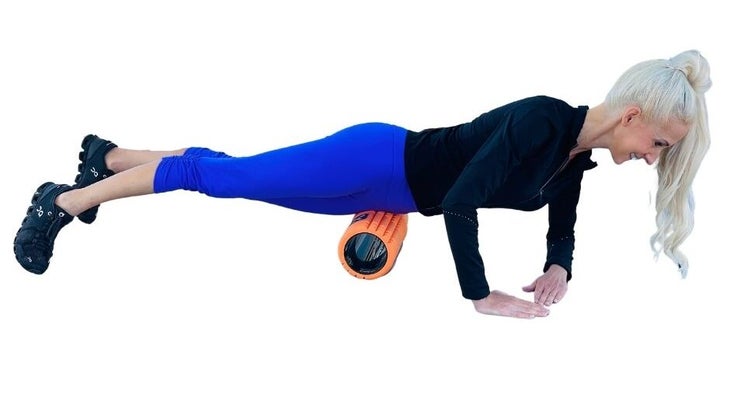
The TFL can be tricky to stretch effectively due to its location on the pelvis. Instead, use your foam roller or a ball to release it.
- Place the roller or ball on the ground
- To find the right spot, imagine your pants have front pockets and put your hands halfway into your imaginary front pockets. This is roughly where the TFL is.
- Put this area of your body on top of the roller or ball
- Move around just a little to find the most tender trigger point area within this region
- Hold gentle pressure against the area for 30 seconds as you breathe through it
Variation: If this is too intense, put the ball or roller on the wall so you can perform the exercise standing instead.
3. Outer Hamstrings Stretch
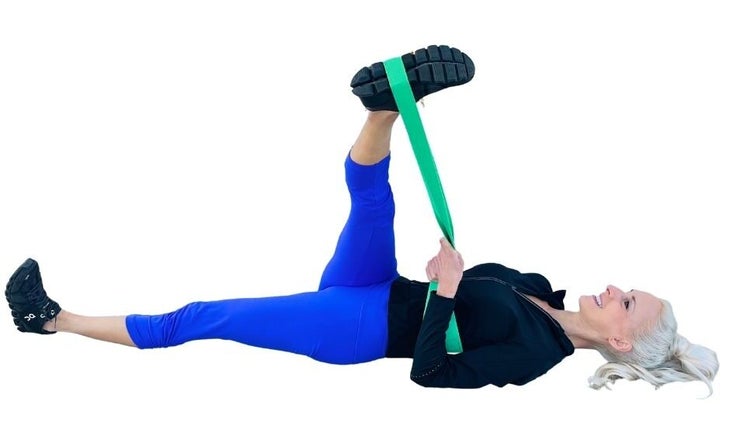
- Grab a stretch strap, yoga strap, jump rope or extra pair of sweat pants
- Lie on your back
- Hook the stretch strap around the arch of your right foot
- Bring your right leg up in the air, using the strap to assist
- Straighten your right knee all the way, while leaving your ankles relaxed
- Keep both sides of your pelvis flat on the floor
- Use your hands on the strap to guide your right leg slightly toward your left armpit; this helps stretch the outer hamstring
Tip: Remember to be gentle, as the sciatic nerve runs close by. Resist the temptation to do a standing or seated forward bend version instead, as we are trying to isolate more of your outer hamstring in this variation.
RELATED: This is the Best Resistance Band Workout for Runners
Exercises for Weak or Inhibited Muscles
The most common weak or inhibited muscles that need pre-workout activation exercises include the gluteus maximus, gluteus medius (muscle on the side of your pelvis and hip), and transverse abdominis (deep abs).
Perform each of the following three exercises without any external weight before each leg day or cardio workout.
1. Gluteus Maximus Hip Bridge
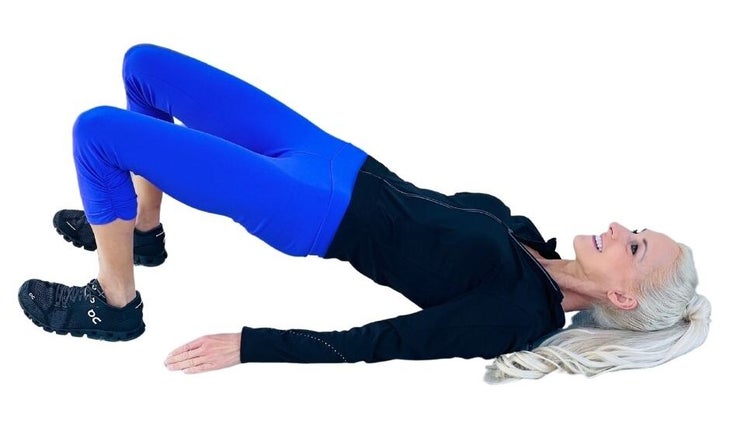
- Lie on your back with your upper arms flat against the floor
- Bend your knees approximately 90 degrees and shift your weight toward your heels
- Consciously squeeze your glutes and pull your ribs in to tighten your core
- Without losing the squeeze, lift your hips off the floor to a point where you’re comfortable and feel the glute activation
- Hold your hips in the air for five to 10 seconds
- Repeat for 10 to 20 reps
Tip: If your hamstrings are cramping, try elevating your feet on a weight bench or chair.
2. Gluteus Medius Side-Lying Hip Raise
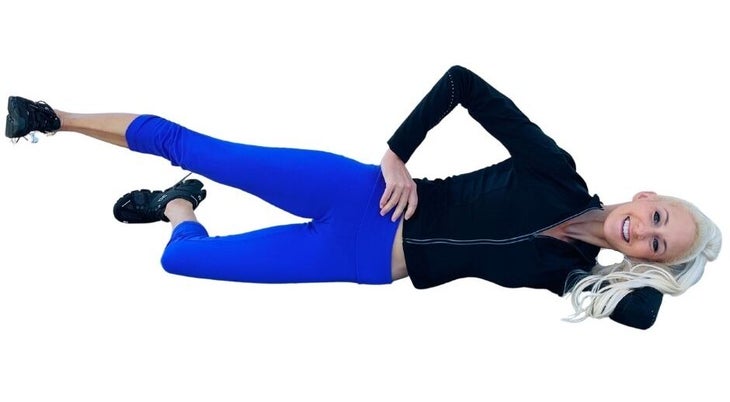
- Lie on your side, making sure the back of your head, pelvis and heels align. It is OK to bend your bottom leg for support.
- Flex the ankle of your top leg
- Actively lengthen your top leg, as if your heel is trying to reach the wall
- Consciously squeeze your glutes to raise your top leg about a foot in the air
- Make sure the heel of your elevated leg is roughly in line with the back of your head
- Hold for 10 seconds
- Repeat for 10 to 20 reps
Tip: Perform the exercise with your back against a wall so you can feel your alignment.
3. Transverse Abdominis 90-90
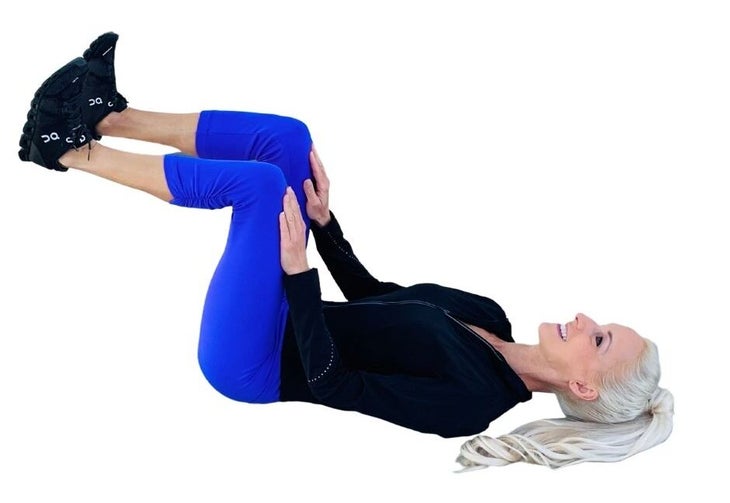
- Lie on your back
- Engage your core to flatten your back into the floor, without lifting your tailbone off the floor
- Bring your hips and knees up to 90 degrees
- Place your fingertips on your thighs
- Gently press your thighs and fingertips into each other to enhance your core engagement
- Work up to holding this position for one minute
Tip: It is OK to feel your thigh muscles working too.
Putting It All Together for Pain-Free IT Bands
The key to making these exercises work is being intentional. You must embody the small details provided, perform the stretches and exercises consistently, and respect their subtle nature. The tips provided are not a quick overnight fix, but dedicated daily inclusion that, in tandem with proper form during your workouts, will bring you one step closer to IT band relief each day.
A final word of warning: Adding more pull to intensify a stretch to 10/10 or adding weights to a muscle activation exercise will most likely only lead to compensation, which will perpetuate the issue instead of leading to the IT band relief you seek. Stick to the mild-to-moderate intensities noted in the stretches above, and focus on form as you move through the bodyweight exercises.
RELATED: How to Treat IT Band Syndrome
